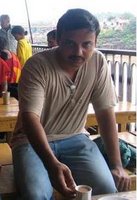 Project Shakti as a model of distribution has attracted a lot of attention both from the company as well as media. The model makes use of existing Self Help Groups working in villages and appoints them as sales persons called shakti amma to sell HUL products in villages. The idea is to be able to reach those villages which do not very good road connectivity and penetration of media is also poor. By appointing the lady as a distributor for the company is able to get a direct reach in villages where it had no presence earlier and the lady would be able to get additional source of revenue. A win-win situation if one were to describe it.
Project Shakti as a model of distribution has attracted a lot of attention both from the company as well as media. The model makes use of existing Self Help Groups working in villages and appoints them as sales persons called shakti amma to sell HUL products in villages. The idea is to be able to reach those villages which do not very good road connectivity and penetration of media is also poor. By appointing the lady as a distributor for the company is able to get a direct reach in villages where it had no presence earlier and the lady would be able to get additional source of revenue. A win-win situation if one were to describe it.The lady- Shakti Amma would be supplied the at her door-step and she would be selling it to the nearby cluster of 3-6 villages. The initiative has three components, one being the distribution component, second being the use of lady for communicating health and hygiene messages in the villages. The third component is IT, wherein a kiosk - ishakti is set up in the village , which could be used as information kiosk in the village.
Though this is relatively an old initiative, started in 2001 in Andhra Pradesh, the news that the model is being taken global is what has brought it back to media attention. Acco

rding to the news item, "The project is being customised and adapted in other Unilever markets such as Sri Lanka, Vietnam and Bangladesh. It is being considered for other Latin American and African markets. In Bangladesh and Sri Lanka, it is being promoted as Joyeeta and Saubaghya, respectively. There is a similar initiative in Vietnam as well." For more on the article, link.
Though there are obvious positives in the project both for the company as well as the lady who takes up the business but there are many issues which need to be looked into. One of issues is the actual amount of benefit that the lady gets by in by engaging in the business for HUL, though the company claims that it almost doubles the household incomes, but there variations in that. Similarly the Vani component of the initiatives which is one in which the company does not make any money is being expanded very slowly and the expansion of the project is not very uniform and even within a village also the project impacts only one lady. And when one interacts or sees the mileage that the company tends to derive out of the project it makes us vary of the claims and the actual benefits....
Though this models of leveraging the existing Self Help Groups in villages for distribution for products to rural areas is being seen by many as the next wave in the SHG movement..
For more details on the project visit, www.hllshakti.com




1 comments:
Post a Comment